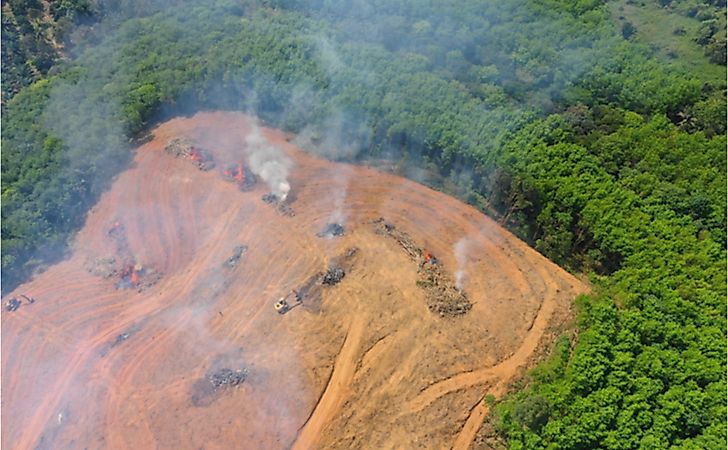Can A Rainforest Catch Fire?

Rainforests are naturally resistant to fires due to their soggy nature and dense canopy. The carbon dioxide produced when green plants burn is enough to put off fires before it spreads. However, the forests are becoming increasingly susceptible to flames due to degradation from fragmentation, logging, and agriculture. Climate change and global warming are worsening the already bad situation as rainfall patterns become distorted. As a result, the equatorial forests such as the Amazon, the Congo, and the rainforests of Southeast Asia are becoming drier and more prone to forest fires.
Role Of Agriculture In Forest Fires
Today’s agricultural fields and pasturelands have encroached into forest areas. Fires are used to maintain crops and clear new lands. Rainforests occasionally experienced low-level fires, but today’s forests experience frequent and more intense fires that result in significant damage to the ecosystem. In the past, fire in the Amazon did little more than burn a few small seedlings and dry leaves and made no significant impact on tall trees and the canopy. But in passing, the fires set the path for more intense burning by thinning out the canopy and letting in more sunlight. Under normal conditions, humidity and rainfall extinguished the flames before they could spread, but in dry conditions, frequent burning of forests close to agricultural lands lead to more intense fires. In the 1980s and 90s, 90 percent of fires in the equatorial rainforests occurred in El Niño years.
Role Of Climate Change
Since the early 1980s, forest fires have become more intense and frequent due to the change in the climate. In 2018 and 2019, wildfires were reported in the forests of Siberia and the Arctic. Equatorial forests experience more damage as the Amazon and the Congo burn on a scale not experienced before. The hot weather and the delayed rainy season created a perfect recipe for the wildfires. Although large-scale farmers, ranchers, and mining firms were blamed for the fires, global warming played a vital role in the scale and intensity.
Role Of Deforestation And Development
High demand for hardwood is fueling illegal deforestation in rainforests. In the past few years, thousands of acres of trees in equatorial forests have been lost to loggers. The Amazon, the Congo, and the jungles of Southeast Asia have been affected the most. The loss of canopy help fires spread faster due to the dry forest floor. The growing global population and human activities are also piling more pressure on forests, and thousands of acres are lost to infrastructural development such as rail, road, and dam projects.
Recent Rainforest Fires
In recent years, rainforests across the world have experienced frequent and intense fires. As of September 2019, about 40,000 fires were burning in the Amazon, and at the same time, the rainforests of Angola and Congo were also on fire. Thousands of acres of rainforests were also burning in Indonesia. The frequent burning of rainforests is a global concern as these forests absorb carbon dioxide and produce large volumes of oxygen.
Rainforest fires are catastrophic for the animals living in such forests. But what animals live in the rainforests? Read this article here.
Also learn what you can do to mitigate these fires here.











